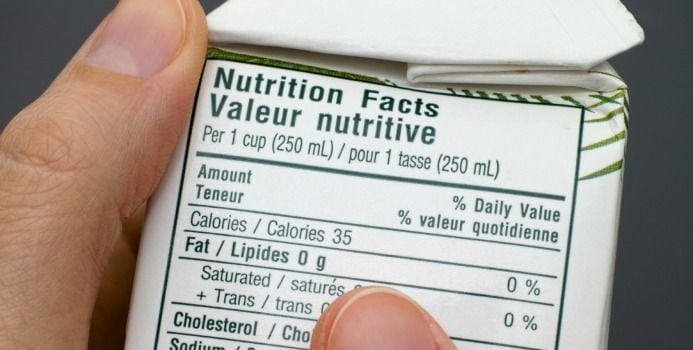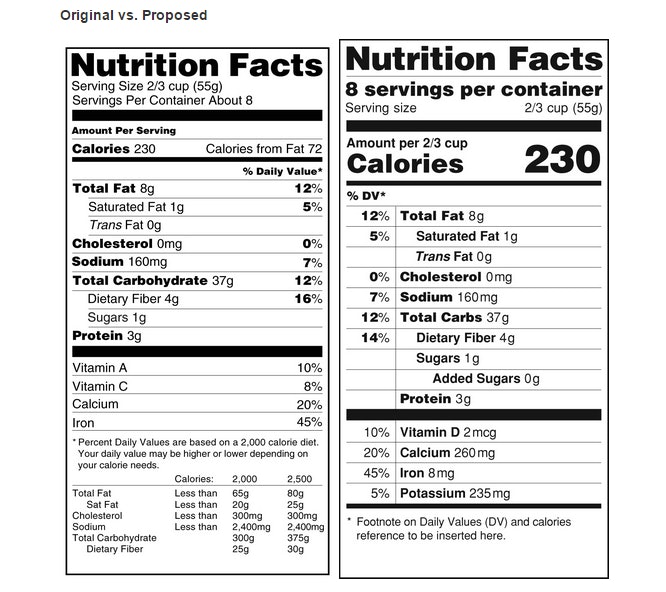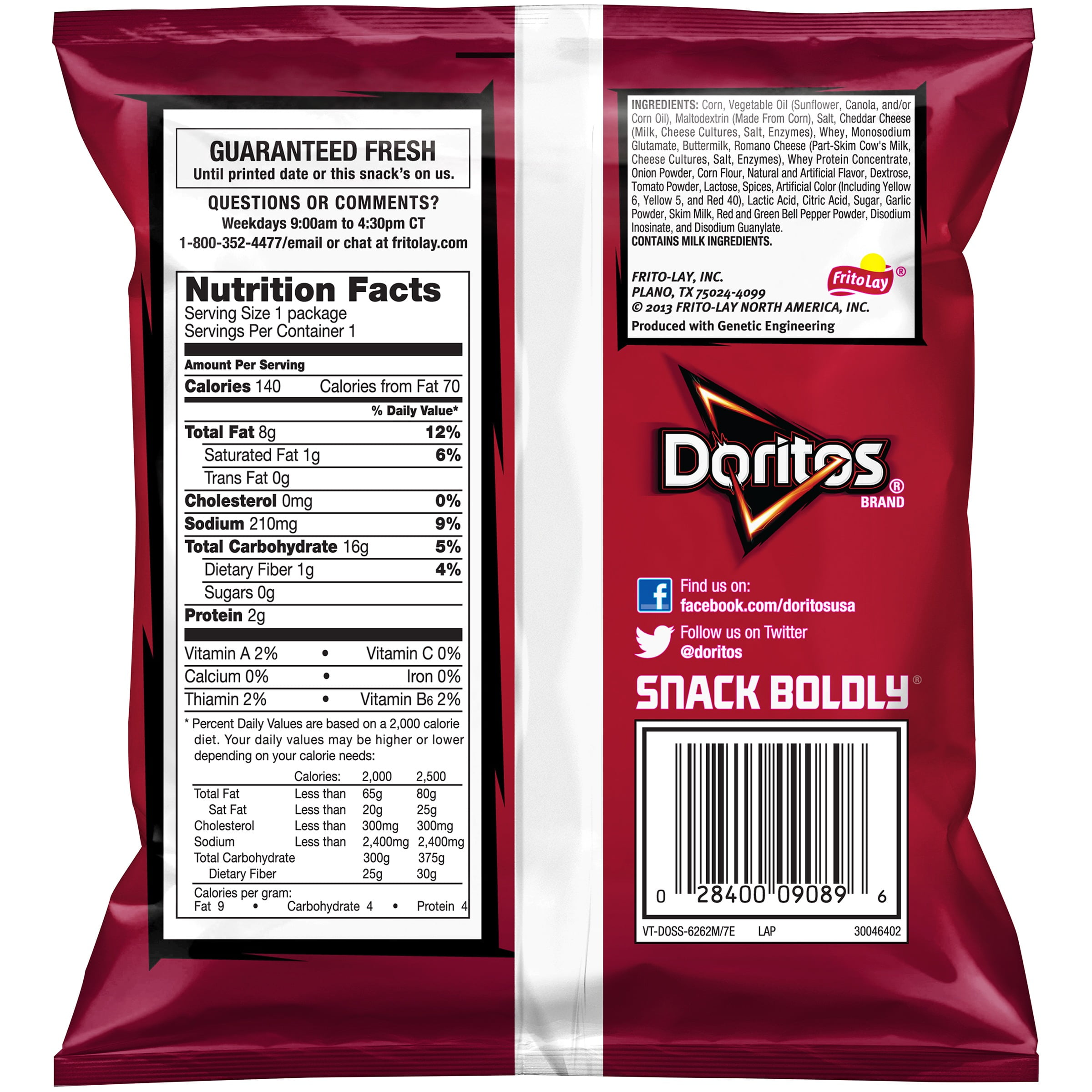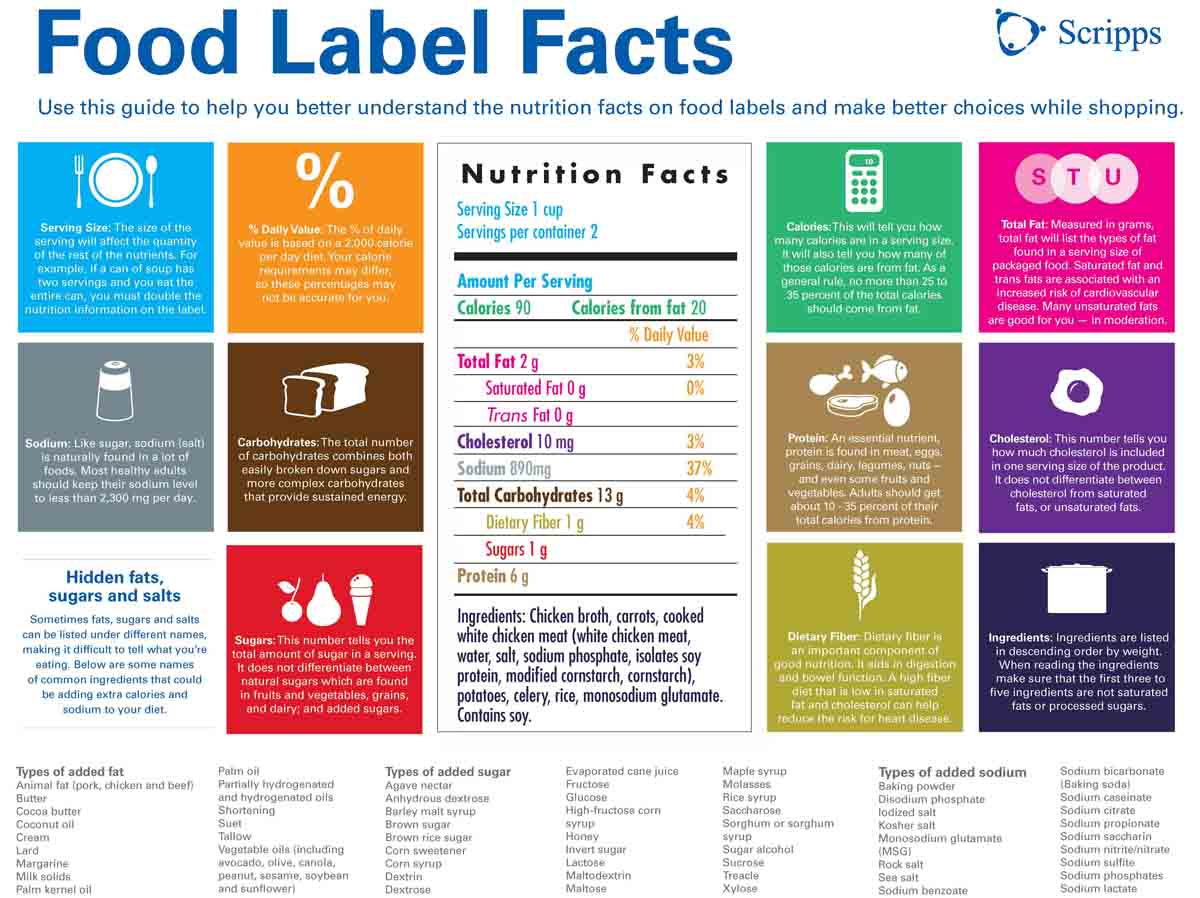42 understanding nutritional facts on labels
20 Tips for Understanding Nutrition Labels | Eat This Not That Macronutrients include fat, carbs (which also breaks down into fiber and sugar), and protein. If anything stands out to you—like the product having 17 grams of fat or 25 grams of sugar—use those numbers to help you skim the ingredient list. For example, a cereal that has 6 grams of fat in it is odd. How to Understand and Use the Nutrition Facts Label | FDA Dietary fiber, vitamin D, calcium, iron ad potassium are nutrients on the label that Americans generally do not get the recommended amount of. They are identified as nutrients to get more of....
Understanding Your Food Labels, Nutrition facts The FDA suggests you look for 5 percent or less of fat, cholesterol and sodium in any individual food. The list of nutrients covers those most important to the health of today's consumers, who need to worry about getting too much of certain items (like fat) rather than too few of the vitamins and minerals that the old labels emphasized.

Understanding nutritional facts on labels
Reading and understanding the Nutrition Facts Label for health The Nutrition Facts Label is making changes that will be required by all manufacturers by Jan. 1, 2020; however, the majority of labels already adhere to these changes. Nutrition Facts Labels include nutrients we should limit such as fat, saturated fat, trans fats, cholesterol, sodium and added sugar. They also list nutrients important to ... How To Read Food and Beverage Labels - National Institute on Aging At the top of the Nutrition Facts label, you will find the total number of servings in the container and the food or beverage's serving size. The serving size on the label is based on the amount of food that people may typically eat at one time and is not a recommendation of how much to eat. Read more about serving and portion sizes. Reading and Understanding Food Labels and Nutrition Info | Beaumont Health A one-percent reduction of saturated fat in your diet reduces your heart disease risk by three percent. Keep saturated fat to less then 15 grams per day. It is not required to list unsaturated fats (polyunsaturated and monounsaturated) on food labels. In general, unsaturated fats lower cholesterol. The healthiest unsaturated fat is canola oil.
Understanding nutritional facts on labels. Get the Facts! Steps to Reading and Understanding Nutrition Facts Labels Check out the % Daily Value. Food labels list percentages of the recommended daily intakes of several nutrients. The numbers are based on a 2,000-calorie diet and are used for adults who are 18 years or older. If you consume more or less than 2,000 calories per day, you still can use % Daily Values as a reference. PDF How Do I Understand the "Nutrition Facts" Label? your total calories. For a person who needs 2,000 calories a day, this is 120 calories or less, or about 13 grams of saturated fat. Most foods in the grocery store have a Nutrition Facts label and ingredient list. When you go grocery shopping, take time to read the Nutrition Facts labels on the foods you purchase. Compare the nutrients and Understanding and Using the Nutrition Facts Label Understanding and Using the Nutrition Facts Label The Nutrition Facts label found on packaged foods and beverages is your ... high in calories, saturated fat, added sugars, and/or Choose fresh ... How to read and understand a nutrition label - CNET Bold text vs. indented text. Bold text on a nutrition label will give you a top-level overview of the nutritional values, and the indented text beneath that breaks it down further. So "Total Fat ...
Food Labeling 101: Understanding the Nutrition Facts Label Front-of-pack nutrition labels prompt buying, more GMO-free products contain labels, and organic-product recalls have increased. Nutrition 101 for Parents and Kids How to Read Nutrition Facts Labels the Right Way - GoodRx Nutrition Facts labels are required to list the total fat, saturated fat, and trans fats on packaged food products. It's important to choose foods with the right kinds of fats. Here are the differences between the fats you'll see on the label. Bad fats Saturated and trans fats are the less healthy types of fats. Understanding Ingredients on Food Labels - Professional Heart Daily There are many terms used for sugar on food labels. You might see sugar listed as the fourth ingredient in a product and think it's not so bad. But sugar can also be listed as high-fructose corn syrup or corn syrup, agave nectar, barley malt syrup or dehydrated cane juice, to name just a few. Read more about sugar and sweeteners. Food labels 101: Understanding the nutrition facts panel Food labels 101: Understanding the nutrition facts panel. Christy Rivette, Michigan State University Extension - April 28, 2013. Use some simple guidelines and strategies for reading the information on the nutrition facts panel to make wise food choices. Most people do not want to spend more time in the grocery store than is necessary.
How to understand food nutrition labels | by Alpha Medical Team | Alpha ... Most of the nutrition label is made up of a table listing various nutrients, the amount of that nutrient contained in the food, and the percent daily value. We'll start with the nutrient amounts.... Understanding Nutrition Labels and Nutrition Facts The Nutrition Facts label is a tool that consumers can use to help make food choices that are best for their individual health. However, it can be a bit confusing, especially when it comes to added sugars in foods until the new FDA-required nutrition facts labels fully go into effect. Serving Size Percent Daily Value (%DV) Sugar Food Labels 101: Understanding the Nutrition Facts Label A sodium level of 140 mg or less on the nutrition facts label is considered low sodium. This is an essential number to look for when reading the label. Total Carbohydrates - Fiber and Sugar Foods high in fiber can be beneficial to a healthy diet, as fiber helps manage blood sugar levels and can lower cholesterol. Nutrition Facts: How to Read Nutrition Labels - Greatist Common nutrition terms to know. The Food and Drug Administration (FDA) regulates terms used on food labels. Here are some to look for: Calorie-free: Less than 5 calories per serving. Low calorie ...
Learn How the Nutrition Facts Label Can Help You Improve Your Health Nutrients Required on Label Vitamin D and potassium values are required. Calcium and iron will continue to be required. Vitamins A and C will no longer be required but can be included on a voluntary basis. Slight Decrease in Sodium Allowance The daily limit for sodium decreased slightly from 2,400 mg per day to 2,300 mg per day.

11 best Nutrition Facts Label images on Pinterest | Food labels, Healthy children and Healthy kids
How to Read Nutrition Facts Label - Food Network This carries over to all the other nutrients on the label. If 1 serving of a food has 120 mg of sodium, it can technically be labeled as a "low sodium" food. However, if you eat 3 servings, triple...
Understanding Food Nutrition Labels | American Heart Association When the Nutrition Facts label says a food contains "0 g" of trans fat, but includes "partially hydrogenated oil" in the ingredient list, it means the food contains some trans fat, but less than 0.5 grams per serving. So, if you eat more than one serving, you could end up eating too much trans fat.

The Nutrition Facts Label: What's Being Changed and What Does It Mean? / Nutrition / Healthy Eating
Help patients understand Nutrition Facts labels to eat smarter This video provides a general overview of the four key sections of the Nutrition Facts label: servings, calories, percent Daily Value and nutrients. The video offers practical guidance for patients on how to use the Nutrition Facts label to compare packaged foods and beverages and make informed dietary choices.
Understanding Nutrition Facts on Food Labels - WebMD Serving Size: An Important Part of Food Labels. At the top of the Nutrition Facts section, you'll see the serving size (such as 1/2 cup, five crackers, or 10 chips) and servings per container (such as two, four, six). The food label then lists the number of calories, grams of fat, grams of saturated and trans fat, etc., per serving.
Understanding the Nutrition Facts Label - Know Diabetes by Heart No label! You can look up the nutrition information via Google or a food application and determine it has about 20 grams of carbs. Adding the two together equals 57. Now let's say your insulin to carb ratio is 15. You would divide 57 by 15 to get 3.8 units (rounding to 4 units of insulin for that meal). Nutrients
Understanding Food Labels | The Nutrition Source | Harvard T.H. Chan ... The Nutrition Facts Label The Nutrition Facts label is overseen by the U.S. Food and Drug Administration (FDA) and was first mandated under the Nutrition Labeling and Education Act of 1990 to help consumers make quick, informed food choices. It has undergone revisions, with the latest update released in 2016.
The Basics of the Nutrition Facts Label The following is a quick guide to reading the Nutrition Facts label. Step 1: Start with the Serving Size Look here for both the serving size (the amount people typically eat at one time) and the number of servings in the package. Compare your portion size (the amount you actually eat) to the serving size listed on the panel.
Reading Nutrition Facts Labels - University of Arizona Nutritional labels provide a wealth of important information about the foods we consume. Based on the nutritional label you can make decisions about what foods are best for you. ... It's important to understand the steps involved in reading a nutritional label. Check the serving size and calories: Begin by looking at the serving size and the ...
Food Labels | CDC If you eat the whole thing, you are eating 8 times the amount of calories, carbs, fat, etc., shown on the label. Total Carbohydrate shows you types of carbs in the food, including sugar and fiber. Choose foods with more fiber, vitamins, and minerals. Choose foods with lower calories, saturated fat, sodium, and added sugars. Avoid trans fat.
Reading and Understanding Food Labels and Nutrition Info | Beaumont Health A one-percent reduction of saturated fat in your diet reduces your heart disease risk by three percent. Keep saturated fat to less then 15 grams per day. It is not required to list unsaturated fats (polyunsaturated and monounsaturated) on food labels. In general, unsaturated fats lower cholesterol. The healthiest unsaturated fat is canola oil.
How To Read Food and Beverage Labels - National Institute on Aging At the top of the Nutrition Facts label, you will find the total number of servings in the container and the food or beverage's serving size. The serving size on the label is based on the amount of food that people may typically eat at one time and is not a recommendation of how much to eat. Read more about serving and portion sizes.

FDA Revises Proposed Nutrition Facts Label To Include Daily Value For Added Sugars | Food Logistics
Reading and understanding the Nutrition Facts Label for health The Nutrition Facts Label is making changes that will be required by all manufacturers by Jan. 1, 2020; however, the majority of labels already adhere to these changes. Nutrition Facts Labels include nutrients we should limit such as fat, saturated fat, trans fats, cholesterol, sodium and added sugar. They also list nutrients important to ...


/__opt__aboutcom__coeus__resources__content_migration__treehugger__images__2020__02__nutrition-facts-label-a5646178f91f4bb989c6b44252167296.jpg)



Post a Comment for "42 understanding nutritional facts on labels"